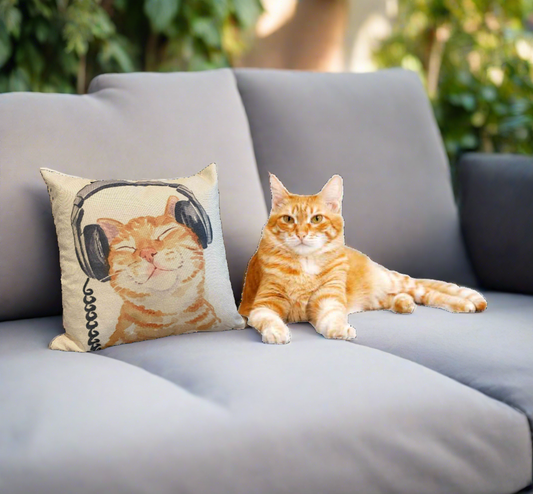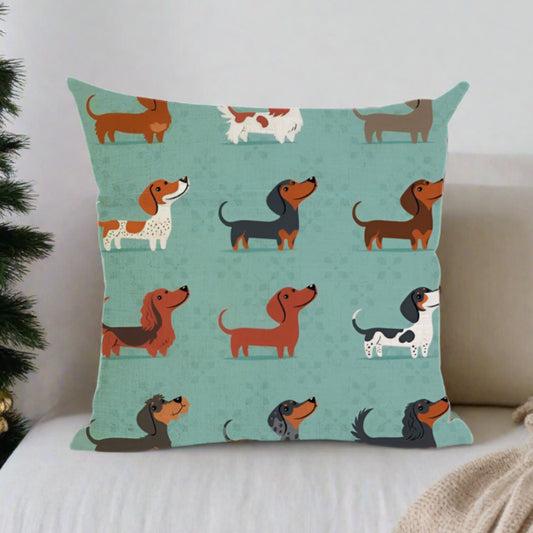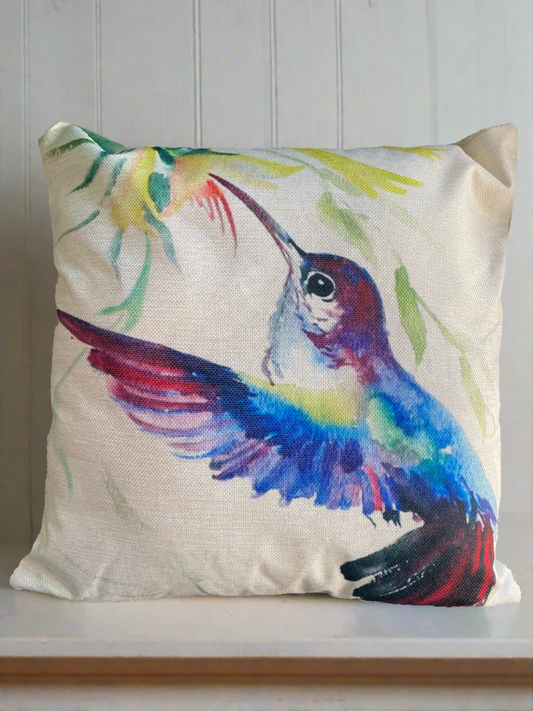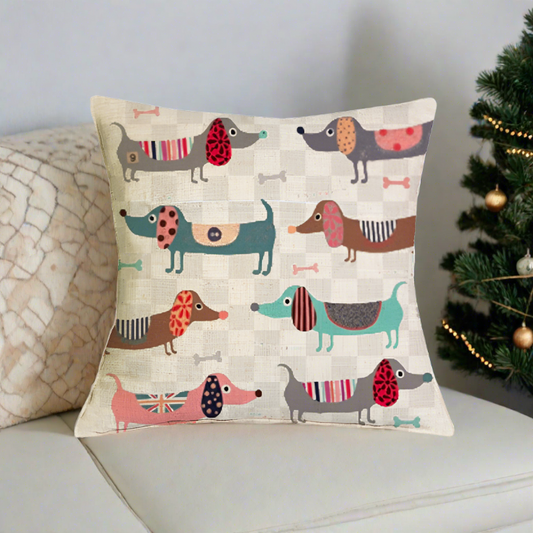When it comes to sleep, a well-fluffed pillow can make all the difference. Whether you’re a side sleeper, back sleeper, or stomach sleeper, keeping your pillow in top shape ensures a good night’s rest. Here’s why fluffing your pillow is so important.

Why Should You Fluff Your Pillow?
Enhances Comfort and Sleep Quality
A fluffy pillow provides better comfort. When pillows flatten, they lose their softness and support. This can make your bed less inviting and your sleep less restful. Fluffing restores the pillow’s volume, making it soft and cozy again. Imagine sinking into a cloud instead of a pancake—big difference, right?
Supports Neck and Reduces Neck Pain
Fluffing your pillow helps maintain proper neck alignment. A flat pillow can cause your neck to bend awkwardly, leading to pain. Keeping your pillow fluffed ensures that it supports your neck correctly. This is especially important for people who suffer from chronic neck pain. Proper support can mean the difference between waking up refreshed or waking up with a stiff neck.
Prolongs the Lifespan of the Pillow
Regularly fluffing your pillow can extend its life. Over time, pillows can break down and lose their shape. Fluffing helps redistribute the filling, keeping it balanced and preventing lumps. This means you won’t have to replace your pillow as often, saving you money and reducing waste.
Improves Overall Sleep Posture
Good sleep posture is crucial for a healthy spine. A well-fluffed pillow helps keep your head, neck, and spine aligned. This alignment reduces stress on your body and prevents discomfort. Whether you sleep on your back, side, or stomach, a fluffed pillow supports your posture, helping you wake up without aches and pains.
Fluffing your pillow isn’t just a small chore—it’s an investment in your comfort and health. So, take a few minutes to fluff your pillow regularly for a better sleep experience.

How to Fluff a Pillow by Hand
Step-by-Step Guide to Fluffing a Pillow Manually
Follow these steps to fluff your pillow by hand:
- Lay the Pillow Flat: Place the pillow on your lap.
- Grab the Sides: Hold the opposite sides of the pillow firmly.
- Push and Pull: Move your hands together and apart, squeezing the pillow like an accordion. This helps break up clumps and allows air to fill the pillow.
- Shake It Out: Hold the pillow by a corner and give it a good shake to redistribute the filling.
Techniques Such as the Accordion Method
Accordion Method:
- Hold the Pillow: Grab the pillow at both ends.
- Compress and Decompress: Push the ends towards each other, then pull them apart. Repeat this for about 30 seconds.
The accordion method effectively breaks up lumps and helps air circulate through the pillow filling, making it fluffier.
Tips for Breaking Up Interior Pieces to Increase Volume
Breaking up interior pieces can be tricky, but these tips can help:
- Massage the Pillow: Use your fingers to knead the pillow, much like kneading dough. This can break up any compacted filling.
- Punch the Pillow: Gently punch the pillow to loosen the filling. Be careful not to overdo it, especially with delicate materials like down.
- Clap the Pillow: Hold the pillow by two opposite corners and clap it together. This can help redistribute the filling evenly.
Benefits of Hand Fluffing for Different Pillow Materials
Different materials require different approaches:
- Down Pillows: Hand fluffing is ideal because it’s gentle. The accordion method works well to keep these pillows airy and soft.
- Memory Foam Pillows: These don’t fluff in the traditional sense, but massaging them can help maintain their shape.
- Polyester-Filled Pillows: These respond well to all hand fluffing techniques, quickly regaining their volume.
Hand fluffing your pillow regularly ensures that it stays comfortable and supportive. It’s a simple way to extend the life of your pillow and enhance your sleep quality.

How to Fluff a Pillow in the Dryer
Detailed Instructions for Using a Dryer to Fluff Pillows
Fluffing a pillow in the dryer is simple and effective. Follow these steps:
- Read Care Instructions: Always check the pillow’s care label. Ensure the pillow is dryer-safe before proceeding.
- Prepare the Pillow: If the pillow is washable, wash and partially dry it first. If not, place the dry pillow directly in the dryer.
- Add Tennis Balls: Put a couple of clean tennis balls inside socks and add them to the dryer. They help break up clumps and enhance the fluffing process.
- Set the Dryer: Use a low heat setting to avoid damaging the pillow’s filling. For delicate materials, choose the air-dry or no-heat setting.
- Start the Cycle: Run the dryer for about 10-15 minutes.
Importance of Reading and Following Care Instructions
Care instructions are crucial for maintaining the quality of your pillows. Here’s why:
- Material Safety: Different fillings react differently to heat. For instance, memory foam can degrade under high temperatures, while down can handle low heat well.
- Prevent Damage: Ignoring instructions can lead to melted or damaged fillings, reducing the pillow’s lifespan.
Best Practices for Different Pillow Fillings and Dryer Settings
Each pillow filling requires specific care:
- Down Pillows: Use a low heat setting. Down is resilient but can scorch at high temperatures. Adding tennis balls helps prevent clumping.
- Memory Foam Pillows: Generally, avoid using the dryer. If necessary, use the air-dry setting. High heat can break down the foam.
- Polyester-Filled Pillows: These can handle low to medium heat. Use dryer balls to maintain fluffiness.
- Feather Pillows: Use low heat and dryer balls. Feathers can become brittle if overheated.
Checking the Pillow Halfway Through the Cycle to Avoid Over-Fluffing
To ensure the pillow fluffs evenly and avoids over-fluffing:
- Pause and Check: Stop the dryer halfway through the cycle and check the pillow’s progress.
- Reposition the Pillow: Shake and reposition the pillow to ensure even fluffing.
- Continue Drying: If needed, resume the cycle for another 5-10 minutes.
Key Takeaway: Always monitor and adjust to prevent over-fluffing and damage.
Utilizing a dryer to fluff pillows can save time and effort, offering a quick way to rejuvenate your bedding. These best practices help ensure your pillows remain in top shape, providing comfort and support.
How to Fluff a Pillow with a Tennis Ball
Explanation of the Tennis Ball Method
Using a tennis ball to fluff a pillow is an easy and clever trick. The tennis ball acts as an agitator inside the dryer, helping to break up any clumps within the pillow. This method works well for both down and synthetic pillows, providing a simple solution to maintain their loft and comfort.
How the Tennis Ball Helps Break Up Pillow Chunks
Pillows can accumulate clumps due to moisture, oils, and regular use. The tennis ball method addresses this by:
- Agitating the Fill: As the dryer drum spins, the tennis ball bounces around, hitting the pillow and breaking up compressed clumps.
- Increasing Airflow: The constant movement helps redistribute the filling, allowing air to circulate more freely within the pillow.
- Enhancing Fluffiness: The result is a pillow that regains its original loft and offers better support.
Step-by-Step Guide to Using a Tennis Ball in the Dryer
Follow these steps to fluff your pillow using a tennis ball:
- Prepare the Tennis Ball: Place a clean tennis ball inside a tube sock and tie the end securely. This prevents the ball from directly contacting the pillow and adds an extra layer of protection.
- Load the Dryer: Put the pillow and the tennis ball sock into the dryer. Ensure the dryer is not overloaded to allow free movement.
- Set the Dryer: Use a low or no-heat setting, especially for delicate materials like memory foam or feathers. For synthetic fills, a medium heat setting can be used.
- Start the Cycle: Run the dryer for about 15-20 minutes. The tennis ball will bounce around, providing the necessary agitation to fluff the pillow.
- Check the Progress: Pause halfway through to check the pillow. Shake it out and reposition if needed, then continue drying.
Additional Tips for Maximizing Fluffiness with This Method
To get the most out of the tennis ball method, consider these tips:
- Use Multiple Balls: For larger pillows or multiple pillows, add more tennis balls to increase agitation.
- Combine Techniques: Before using the dryer, manually fluff the pillow by massaging and shaking it to help break up initial clumps.
- Ensure Cleanliness: Always use clean tennis balls and socks to avoid transferring dirt or odors to your pillows.
- Regular Maintenance: Fluff your pillows regularly using this method to maintain their shape and comfort.
Key Takeaway: The tennis ball method is an effective and simple way to keep your pillows fluffy and supportive. By following these steps and tips, you can ensure your pillows remain in excellent condition for a better night's sleep.
How to Fluff a Pillow Outside
Benefits of Exposing Pillows to Sun and Breeze
Fluffing pillows outside harnesses the natural power of the sun and breeze. This method provides several benefits:
- Natural Freshness: The sun's ultraviolet (UV) rays help kill bacteria and dust mites, making your pillow cleaner and fresher.
- Odor Elimination: Fresh air helps remove stale odors trapped inside the pillow, leaving it smelling clean.
- Moisture Reduction: The warmth of the sun helps evaporate any moisture that may have accumulated inside the pillow, preventing mold and mildew growth.
- Increased Fluffiness: The gentle movement of the breeze helps redistribute the pillow's filling, enhancing its loft and comfort.
Step-by-Step Guide to Outdoor Fluffing
Follow these steps to effectively fluff your pillow outside:
- Choose a Sunny Day: Select a day with clear skies and low humidity. This ensures the best conditions for drying and fluffing your pillow.
- Prepare the Area: Find a clean, dry spot outside. Lay a clean towel or cloth on the ground, table, or clothesline where you plan to place your pillow.
- Remove Pillowcases: Take off any pillowcases or covers to allow maximum exposure to the sun and air.
- Position the Pillow: Place the pillow on the towel or hang it on the clothesline. Ensure it's spread out evenly to allow full exposure.
- Leave in the Sun: Let the pillow sit in direct sunlight for 3-4 hours. Flip the pillow halfway through to ensure both sides get equal exposure.
- Check for Dryness: After the allotted time, check the pillow for any remaining moisture. If it's still damp, leave it out for an additional hour or until fully dry.
How This Method Helps with Moisture and Odor Removal
Outdoor fluffing effectively tackles moisture and odors:
- Moisture Evaporation: The heat from the sun evaporates any trapped moisture within the pillow, which is crucial for preventing mold and mildew.
- Odor Neutralization: Fresh air circulates through the pillow, carrying away unpleasant odors and leaving a natural, clean scent.
- UV Sterilization: The UV rays from the sun act as a natural disinfectant, killing bacteria and mites that can cause odors.
Ideal Conditions and Duration for Outdoor Fluffing
For optimal results, consider these conditions and durations:
- Weather Conditions: Choose a sunny, dry day with minimal humidity. Avoid days with high humidity or impending rain, as these can add moisture to the pillow.
- Duration: Leave the pillow outside for at least 3-4 hours. For thicker or more moisture-laden pillows, extend the time as needed. Ensure the pillow is dry before bringing it inside.
- Time of Day: Midday sun is usually the strongest and most effective for drying and disinfecting. Aim to start the process by mid-morning so the pillow has ample time to dry.
Key Takeaway: Fluffing your pillow outside using the sun and breeze is a natural and effective way to maintain its freshness and comfort. By following these steps and tips, you can keep your pillow in great shape with minimal effort.
Tough to Fluff: Best Ways to Fluff Different Types of Pillows
Memory Foam Pillow
Memory foam pillows can be tricky to fluff due to their unique material. Here are some effective methods:
- Manual Fluffing: Gently knead and squeeze the pillow to break up any clumps and redistribute the foam evenly.
- Dryer Method: Place the pillow in the dryer on a low heat setting. Add a couple of tennis balls wrapped in socks. This helps the pillow regain its shape without overheating and damaging the foam.
- Flipping Regularly: To maintain the shape and support of your memory foam pillow, flip it regularly. This prevents uneven wear and keeps the pillow evenly distributed.
Key Points:
- Low Heat: High heat can damage memory foam, so always use low heat when drying.
- Tennis Balls: The agitation from tennis balls helps break up clumped foam, restoring fluffiness.
Body Pillow
Body pillows require special attention due to their size. Here’s how to keep them fluffy:
- Manual Fluffing: Hold the pillow at both ends and shake it vigorously. This helps redistribute the filling evenly. You can also punch and knead the pillow to break up any clumps.
- Dryer Method: If manual fluffing isn’t enough, place the body pillow in the dryer on a low heat setting. Add a couple of clean tennis balls or dryer balls to help break up clumps and redistribute the filling.
Key Points:
- Shake and Knead: Regular shaking and kneading can keep the body pillow fluffy without needing the dryer.
- Low Heat in Dryer: Always use low heat to avoid damaging the pillow’s filling.
Vacuum-Sealed Pillows
Vacuum-sealed pillows need time to expand and regain their shape. Here’s what to do:
- Expansion Time: Allow the pillow to sit out for 24-72 hours after opening the vacuum seal. This gives the filling time to expand fully.
- Quick Fluffing: For immediate use, put the pillow in the dryer on a low heat setting for 20 minutes. Adding a tennis ball in a sock can help speed up the expansion process.
Key Points:
- Patience: Give vacuum-sealed pillows ample time to expand naturally.
- Immediate Use: Use the dryer method for quick fluffing if you need the pillow right away.
Takeaway: Different types of pillows require different fluffing techniques to maintain their comfort and support. By following these specific methods, you can keep your pillows in excellent condition, ensuring a better night’s sleep.
How to Fix a Lumpy Pillow
Lumpy pillows can disrupt your sleep and cause discomfort. Here’s how to identify and fix lumps in your pillow:
Identifying and Addressing Lumps
First, understand where the lumps are in your pillow. Run your hands over the surface to feel for uneven areas. Once you’ve identified the lumpy spots, you can start addressing them.
Techniques for Massaging and Redistributing Pillow Filling
Massaging your pillow helps break up the lumps and redistribute the filling. Here’s how you can do it effectively:
- Kneading: Use your fingers to knead the lumpy areas like you would knead dough. This breaks up clumps and spreads the filling more evenly.
- Squeezing and Fluffing: Hold the pillow by its edges and squeeze it in and out, then fluff it by shaking it vigorously. This helps to reintroduce air and even out the filling.
- Diagonal Clapping: Hold the pillow by opposite corners and clap it together, then pull it apart. Repeat this several times to break up the lumps.
Key Tips:
- Regular Maintenance: Regularly kneading and fluffing your pillow can prevent lumps from forming in the first place.
- Spot Treatment: Focus on lumpy areas specifically rather than the whole pillow to save time and effort.
Benefits of Regular Maintenance to Prevent Lumps
Regular maintenance is crucial to keep your pillow in good condition. Here’s why:
- Even Distribution: Regular fluffing and kneading ensure the filling stays evenly distributed, preventing lumps.
- Extended Lifespan: Consistent care can extend the life of your pillow, ensuring you get the most out of your investment.
- Better Sleep Quality: A well-maintained pillow provides better support, leading to improved sleep quality.
Routine Checks:
- Monthly Fluffing: Make it a habit to fluff your pillow once a month.
- Weekly Adjustments: Adjust and knead your pillow weekly to keep it in top shape.
Recommendations for Firm Pillows to Avoid Lumping
Choosing the right pillow can also help avoid lumps. Firm pillows often maintain their shape better than softer ones. Here’s what to consider:
- High-Quality Fill: Pillows with high-quality fill materials like memory foam or latex are less likely to develop lumps.
- Firmness Level: Opt for a firmer pillow if you frequently experience lumps. Firm pillows provide better support and maintain their shape longer.
- Cover Material: A durable cover material can help keep the filling in place, reducing the chances of lumps forming.
Top Picks:
- Memory Foam Pillows: These tend to keep their shape and provide consistent support.
- Latex Pillows: Known for their durability, latex pillows are resistant to lumping and provide excellent support.
By following these steps and choosing the right type of pillow, you can ensure a comfortable, lump-free sleeping experience.


















































